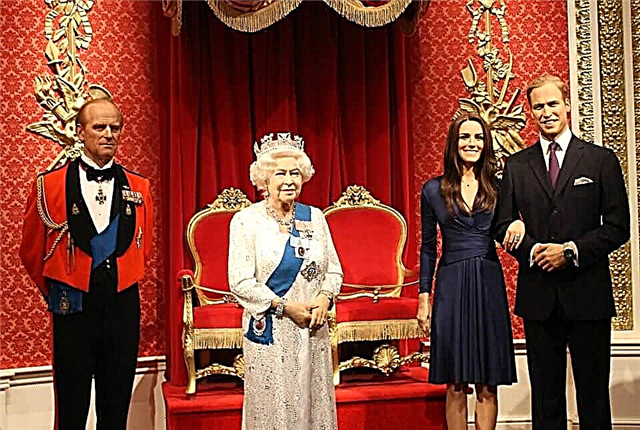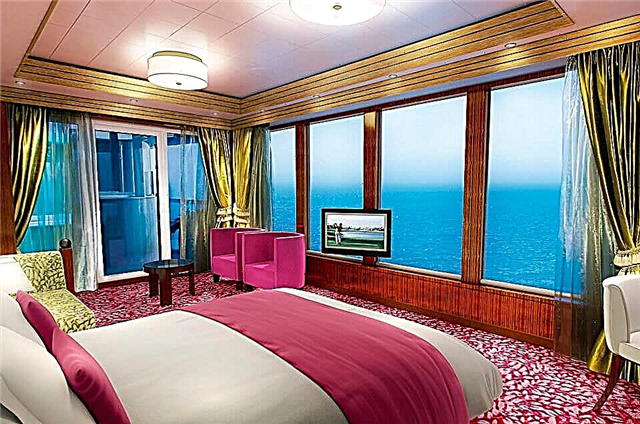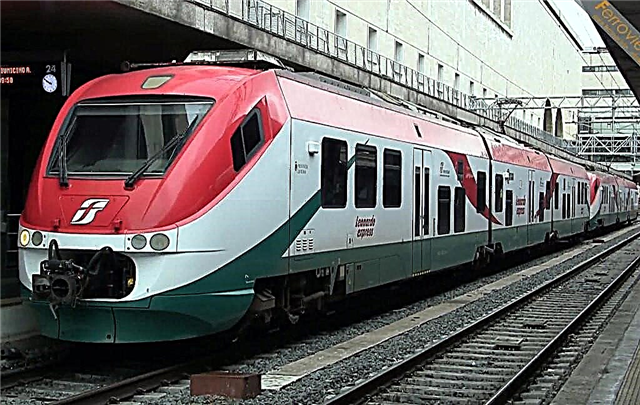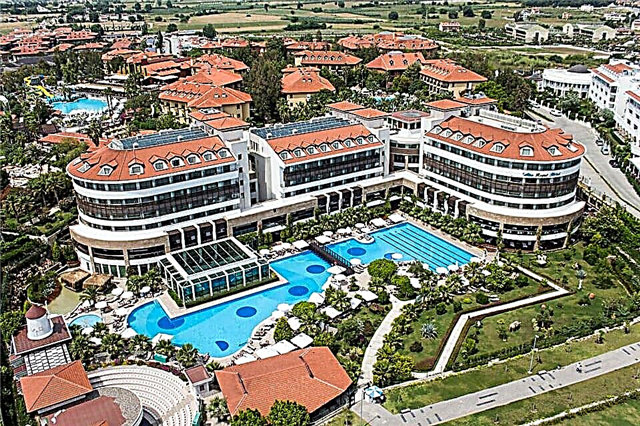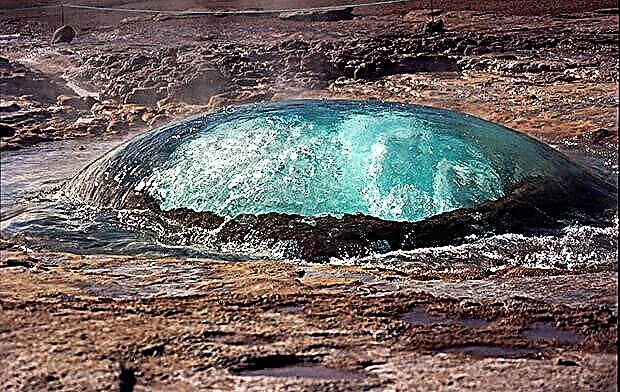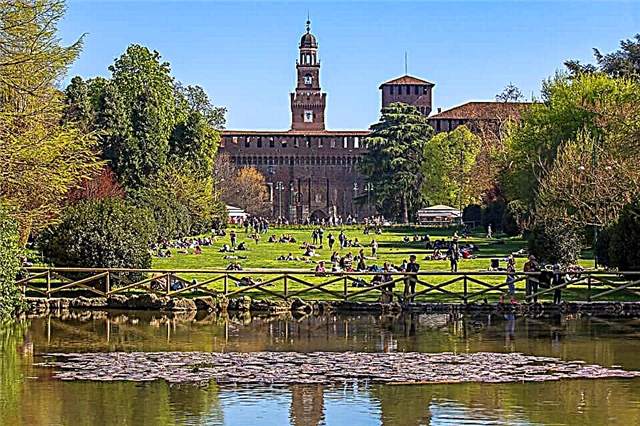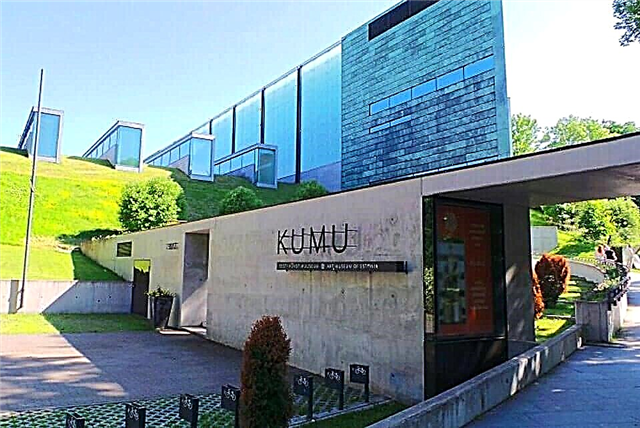State institutions that are engaged in the collection, preservation of cultural and historical heritage, appeared on the planet in about 290 BC in Alexandria. Since then, they have become not only the repositories of collections, but also the strongest educational centers in the country. It is advisable to start acquaintance with it with visiting art galleries, exhibitions of artifacts belonging to the country. Amazing expositions demonstrating everyday life, historical events. Tallinn's museums contain complete information about people's lives, show treasures carefully preserved for posterity. Among them are the following city museums.
Estonian Maritime Museum

The institution was organized on the initiative with the direct participation of the former captains and sailors in 1935. It received a permanent place in 1981 in the Fat Margarita gun turret. The building has its own history of over 500 years. The new exposition was located in 2012 in the building of the Seaplane Harbor. In the former seaplane hangar on the site of the permanent exhibition "The Sea of Interesting" there is a submarine "Lembit" produced in 1937. The hull of the oldest ship Maasilinn, found in the waters of the country. Seaplane "Short 184", sea mines, cannon collection, sailboats, boats.
There is a restaurant and shops on the territory. Specialized exhibitions, seminars, conferences on the topic of navigation are held. This is of interest to schoolchildren. There is a working port nearby. It offers to look at the century-old icebreaker "Suur Tõll", over 100 models of ships from different times. Separate expositions show auxiliary equipment for sea vessels, navigational charts, compasses. Address: Vesilennuki, 1.
Kumu Art Museum

Place of storage, exhibitions, permanent, temporary exhibitions of works of art by Estonian masters who have been working since the end of the 18th century. The works of the Soviet period contain works of socialist realism, unofficial art. KUMU stands for KUnstiMUuseum (art museum). The building was constructed by an Estonian architect in 2006. The architectural landmark is located on the edge of a cliff, decorated with copper elements in harmony with natural stone massifs.
It houses the largest collection of works by foreign and Estonian artists in Northern Europe. The expositions of the National Gallery are built with a focus on different age groups. They contain sculptures, paintings, modern installations with effects built using computer technology. In 2008, Kumu was named European Museum of the Year. Address A. Weizenbergi tn 34.
Museum of Occupation and Freedom Vabamu

Freedom and independence are of value for each country. On the way to its conquest, the people overcome a difficult historical struggle. Descendants will want to know her motives, ways, the names of the heroes who defended the life of the Motherland. The permanent exhibition of elements that characterize the modern history of Estonia attracts visitors of all ages. The electronic guide in different languages provides detailed information on the stored materials. Including true memories of freedom fighters, rebels, collaborators. "Freedom" is presented in the form of a story of perseverance, survival, evil, cruel tragedies. The permanent exhibition consists of five parts: "Soviet Estonia", "Freedom".
"Restoration", "Inhumanity", "In Exile". The institution is located in the Old City, in a building where prison cells, an interrogation room operated, crimes were committed under the leadership of the KGB. Having learned the stories of crimes against humanity, you begin to evaluate freedom, independence, and justice differently. Address: Tallinn center.
Health Museum

The main wealth of the country is the health of its inhabitants. Throughout his existence, man has been looking for ways to prolong life, alleviate diseases, and the causes of their occurrence. Ancient people kept the secrets of traditional medicine medicines. Invaluable teachings were created, which entered into practice, the experience of modern and traditional medicine. How a person is arranged, what happens to his organs during an illness, how to make him a long-liver, it is proposed to learn from interesting exhibitions.
Over 20 thousand exhibits are located on two floors of the building on the territory of Old Tallinn. There is a permanent exhibition "Frankly about your body". For the accumulation of information on each separate body, a specific room has been allocated. It must have an interactive exhibit with the ability to touch it. The first study of the exhibitions takes place together with the acquaintance with the human skeleton, determination of the location of all its organs.

Entertainment activities allow you to check your reaction, choose a new hairstyle using the original photo. On bright informative stands it is proposed to read as much information as possible about the history of the development of medicine in the country. In special halls, services for holding celebrations are organized, classes are held for schoolchildren. Address: Tallinn, Lai 30.
Estonian history museum

11 thousand years of history of the native people, from the ancient period to the present, are presented in the State Historical Museum of the country. After the 2011 renovation, it acquired the capabilities of amazing interactive technologies. Thanks to them, there were proposals to effectively plunge into the world of art, history, traditions, and culture of the native land. Live screens, quizzes, assignments, films, games present information in English and Estonian, captivating a variety of children and adults.
Exhibition halls have been located in the historic building of the Great Guild since 1952. The Gothic structure, erected in 1430, is considered a landmark in Tallinn and a worthy location for temporary, permanent exhibitions of historical artifacts. These are expositions "Strong in Spirit", "11000 Years of Estonian History", "Easy Money". Various types of small arms are displayed in the armory hall. Visitors are encouraged to play on electronic devices. The exterior of the building has been preserved. The collection archive has been formed since 1842, starting with the collections of antiquities of the pharmacist Johann Burckhardt (he lived in 1776-1838).
The institution received the status of a museum in 1940. In 1975, a part of the Maarjamägi castle was added to it, opening a branch with exhibitions covering the beginning of the 19th century. In the park next to the building are collected monuments to the Communists, whose activities are associated with the Estonian SSR. When visiting the exhibitions, an audio guide in 6 languages is provided on a deposit with a subsequent return.
Estonian open air museum

Tallinn's Rocca al Mare area is home to a corner of Estonian history. 74 wooden buildings, assembled in the style of farmsteads of the country's ancient settlements, return visitors to a cozy, quiet agricultural country. It seems that it is about to smell of delicious national cuisine, fragrant smoke swirls over the roofs of houses and a cart with a silent, obedient horse will creak. The life of Estonians in the west, north, south, islands is shown from all sides. In peasant settlements (of which 14 farms have been formed), churches, chapels, taverns, windmills, schools, shops, fishermen's houses and boats with fishing gear come to life.
Inside the houses are furniture, kitchen utensils, tools, ancient jewelry, clothing. There are special rooms for celebrations, weddings, banquets. All exhibitions are open in summer. Near each house, guests are greeted by hospitable Estonians dressed in national clothes.In winter, the building of the Kuiyo school and the Kolu tavern are open to the public. All year round, you are invited to ride a horse-drawn carriage or sleigh around the outskirts of “Ancient Estonia”. Listen to many interesting stories about the ancient homeland, for example, see on which island one of the oldest pine trees in the world grows.
Marzipan museum

The favorite delicacy of the Baltic peoples appeared in the Middle Ages in the form of a pharmaceutical preparation. It is difficult to say in which country they began to make it first. In Estonia, factories for the production of aromatic sweets were opened by Georg Stude at the beginning of the 19th century. Now the "tasty" establishment includes an exhibition hall, a shop, a cafe and belongs to the Sweets House OU confectionery complex. Over 200 colorful figurines made in ancient forms invite you to come in and taste marzipans. They are made according to special recipes from specially ground almond flour, additives, and powdered sugar.
Special skill is required when coloring sweet products. At the request of visitors, the process can be done in the presence of the customer and according to his fantasy proposals. Figures of any shape are made from marzipan. On the windows there are almost natural flowers, animals, voluminous portraits of people, cakes, the height of a person. When conducting a master class, it is proposed to sculpt, paint products on their own. It is difficult to deny a child a visit to an amazing place. Moreover, it is located next to the Town Hall Square at the address: Pikk Street, 40.
Nuku Doll Museum

This is not just a collection of dolls from different nations. The luxurious displays include puppets that have played specific roles in the Estonian Puppet Theater. More than a hundred familiar models have played in performances, performed on stages. The oldest doll in 2020 is 82 years old. The most terrifying specimens (from fairy tales) are placed in the Panic Room. Unusual interactive galleries are located in the building of the historic center of Tallinn at 8 Nunne Street. They appeared in 2010 and became a visual reflection of theatrical history.
During the excursions, it is proposed to learn how the stage is arranged, to discover the secrets of the stage arrangement of the puppet theater. Going down to the basement floor, you are invited to listen to the voices of living people who worked in the theater due to the work of a huge screen with unusual buttons. Not every daredevil dares to walk along the glass bridge next to the exhibitions. The institution has workshops and master classes. You can learn how to make a doll on your finger, a puppet, a character for a shadow theater, a classic version of a product yourself. Get acquainted with the outfits, costumes of dolls, make them out of paper, metal. Perform the required makeup.
Maaryamagi

A memorial complex rises next to the old castle. It includes historical monuments: Reconciliation Square, decorated in honor of the memory of the Ice Campaign. A military cemetery with graves of German, Soviet, Estonian soldiers who died in the battles of the Great Patriotic War. A modern architectural ensemble dedicated to the residents of the country who have become victims of political repression and deportation. In 1960, the first memorial site appeared on the hillside. It was an obelisk of the future Square of Reconciliation, 35 m high. Next to the stands there is a sculpture "Everlasting Flame" and an architectural composition "Dying seagulls".
Their bronze bodies are pressed against dolomite rocks and form a gateway to the War Cemetery. During the Soviet Union, orchestras of parades and pioneer salutes sounded on the square. The new part of the architectural masterpiece, which opened in 2018, is striking with a flight of thought. It is called The Way and the Garden. Two black walls form a corridor (Path) to death from the ruthlessness of the totalitarian system. 22 thousand names are written on the walls. At the end of the tunnel there is an apple orchard. He plays the role of a symbol of memories of his home, faith in a happy future.
Kadriorg Art Museum

In 1927, after a major renovation, the famous Baroque-style Kadriorg Palace was opened. After the events of 1919, Weizenberg's sculptural workshop settled in the building, and exhibitions of artists of that time were held. The palace has become a center of attraction for creative names. It was not surprising that the birth of the place where the works of foreign artists, and not only Estonian masters, were exhibited arose within these walls. An active museum activity began in 1946. The new birth of the institution took place after the restoration in 2000.
It houses the largest collection of Western European and Russian art in the country. A separate exhibition is dedicated to items donated by Johannes Mikkel. It contains paintings, sculptures, graphics, porcelain products, and elements of applied art. The ceremonial halls, filled with rare exhibits, return the interior of the palace to its former splendor and grandeur. Together with the fascinating history of the palace and the park, they form an invaluable artistic heritage and attract numerous tourists. Address: A. Weizenberg 33.
Bank of Estonia Museum

Here you can exchange Estonian kroons, buy commemorative coins, original souvenirs. This is the only place on the planet where Estonian kroons can still be exchanged for euros, or a damaged banknote can be replaced. Along with the usual banking operations, visitors are given the opportunity to plunge into the historical world of the appearance of money in the country. Play interactive games, learn the rules of asset management of the Central Bank, modern payment methods. To touch on the activities of the bank and its role in the financial operations of the eurozone.
The permanent exhibition contains samples of genuine banknotes brought from all over the world. During the excursion listen to stories of money making methods. Those interested can learn to determine their authenticity. Halls with interesting exhibits are located in the old, historical building of the Credit Society of Estonian Nobles, erected in 1904. Premises in a red brick corner tower have been allocated for them. Visiting exhibitions is free of charge with the Tallinn Card.
Estonian Museum of Natural History

Many secrets of the geological life of Estonia. Its living, flora, hidden river and sea mysteries are invited to learn from the expositions in the building, standing near the famous Fat Margarita tower. The main entrance gate of the building with the Loodusmuuseum sign appears after entering the courtyard through a prominent arch. Three floors are filled with elements of themed exhibitions. At the interactive stand, among the stands with photographs, it is proposed to learn in detail the features of the landscape. Clarify where the pine forests are rustling, and where the almost impenetrable swamps doze.
By the way, the country was included in the lists of the first inventors of tourist routes laid in a special way through a living bog. An exhibition of mushrooms is held in the halls every year. This is not only interesting but also useful. The younger generation sometimes cannot distinguish the pale toadstool from the green russula. The life-size stuffed animals complement the school curriculum well. Here you are invited to see bears, moose, wolves, foxes, learn everything about their life. A useful assistant in this will be an audio guide with four languages: Estonian, Finnish, English, Russian.
Niguliste Museum

In the western part of Old Tallinn rises the beautiful medieval St. Nicholas Cathedral or Niguliste Church. Since 1944, the sacral building houses a rare collection of elements and works of art that adorned the ancient churches and monasteries of the city. A rare altarpiece has been preserved here, made in the Old Dutch style and designed by the local artist Zittow.
Numerous tombstones of medieval burials, the Silver Room. It houses exhibitions of church silverware. A fragment of the painting "The Dance of Death" by Berthe Notke is a real treasure of the city.It depicts a chain of people (starting with the Pope and ending with a baby) and dancing figures of Death, enticing people with them. The work, created 5 centuries ago, is relevant at all times of human existence.
It is a pity that a fragment with 13 figures has survived from the 30-meter canvas. It is believed that the artist created two similar works, but one painting was lost during the war. The special properties of acoustics in the church helped to organize a concert hall in it. The magic power of the ancient building, the beauty of its decoration increases during musical concerts. Address: Niguliste, 3.
Estonian Museum of Contemporary Art

The talent, creativity of artists of different generations was expressed in specific techniques, methods inherent in the passing time. There was always an alternative space for self-expression, the approval of new names. Contemporary art includes not only classical works of art, but also compositions aimed at a philosophical perception of art. Museums appear, similar to the original exhibition grounds. One is located in the building of the old boiler room.
There is an exhibition hall with original exhibits and a cafe. The renovated room hosts exhibitions (5 international photo exhibitions have already taken place), experimental films are shown, and an art fair is held. Thematic seminars, meetings, conferences devoted to the political influence on art, the consequences of climatic chaos on the planet are held.
Tallinn City Museum

All aspects of the city's life, the historical stages of its development are reflected in permanent, temporary exhibitions. Since 1965, they have been located in a former trading house of the 14th century. A salt cellar, a chimney, and a window frame have been preserved in it. Acquaintance with numerous artifacts (there are almost 150,000 items) accompanied by modern music. Since 2001 there has been a permanent exhibition "The City That Never Prepares". It reflects the historical events of Tallinn. On the upper floors, with the help of modern displays, it is proposed to watch live events taking place during the wars, occupation, the birth of modern Estonia.

The online display was created from 3D virtual travel and photographs. A separate exhibition is dedicated to the period of restoration of the country's independence. The institution unites 10 objects located near Tallinn. Among them are interesting galleries for children, collections of photographs, ancient fortifications of the city. Since 2016, an exhibition of decorative stones has been opened in one of the tunnels of the former bastion. Address: Vene Street, 17.
Estonian Museum of Architecture

Each country has its own style of building buildings, its own methods of implementing the ideas of local architects. Architectural complexes of modern materials appear that amaze the world, become elements of imitation. Such masterpieces have an interesting history, they are surrounded by legends and myths. Residents of all corners of the planet are trying to preserve them for posterity. Such a place in Tallinn was organized in 1991 on the territory of the medieval Loewenschede tower. After 5 years, the expositions were moved to the former Rotermann salt warehouse.
The collection consists of models of buildings erected by the country's architects at different times. During the excursion, it is proposed to learn the history of the formation of construction achievements, the emergence of new trends in the architectural industry. Birth of discoveries, inventions in the construction field. In a separate exposition there are drawings and diagrams of famous buildings. Fine art exhibitions are constantly held here. Modern design of the halls has been completed using electronic methods.
Estonian Firefighting Museum

Fire station buildings were one of the first to appear on the streets of cities. From here came help to people during the fire. Technical advances, the development of new methods of extinguishing fires were quickly reflected in the activities of this city service. In many places, the buildings of the first firefighters have survived. They contain interesting expositions from the elements of the past (buckets, hooks). In Tallinn, such a place is the building of 1939, designed by the architect Herbert Johansson.
The complex has a 32 m tower used for drying fire hoses. The exhibition contains elements of fire-fighting equipment, protective suits for rescuers, and a hand pump. The original proposal is considered to be a model of a residential building during a fire. With the help of flashing bulbs, 27 places of frequent fires are indicated. This helps to educate children about fire safety rules in a normal home environment. And it will also be interesting for them to sit behind the wheel of a real fire engine. It is suggested to take part in an entertaining excursion by pre-booking the trip.
House-Museum of Peter I

The appearance of the palace and the Kadriorg Park is associated with the name of the Russian Tsar Peter I. During the Northern War, he stayed in Reval (future Tallinn) 11 times. The king's plans were to create a summer residence in the vicinity of the famous Lasnamäe limestone. The first step in realizing his dream was the purchase of a nondescript building on the territory of a local estate in 1714. The choice was made due to the views of the harbor, sea, ships that opened from the house.
From here it was easy to observe the enemy ships during the Northern War. Later the house was named "the old palace of Peter I". By order of Emperor Alexander I, the oldest museum of Peter I of Tallinn was opened in the house (1806). The exposition includes rooms for a bedroom, a dining room, a living room, a basement and an attic that were completed later. The interior of the rooms is decorated with things, furniture belonging to the royal family. The halls provide for various events. Address: Kadriorg, Mäekalda 2.
Museum of applied arts

While relaxing in the resorts of the Estonian coast of the Baltic Sea, on excursion trips, one would like to get to know the ancient distinctive culture of the country better. See found and contemporary pieces of applied art from local creators. They will best tell about life in this place on the planet. It is suggested to make such discoveries for oneself when examining the expositions in the premises of the former three-story warehouse for storing grain. The building of 1695 was considered one of the largest outbuildings in the city.
Since 1980, it has hosted over 15,000 exhibits of design elements and professional handicrafts. Photos, negatives, slides are shown separately. Archive, rich library is designed. The main exposition includes items made of ceramics, glass, metal, jewelry, numerous copies of old books. The institution often hosts thematic exhibitions and various events. Separately, there are objects from the applied art of Western Europe, made in the 18th and 19th centuries. Address: Lai tn 17, next to the Town Hall Square.
Kiek in de Kök

An amazing place in Tallinn is filled with historical facts, legends about two seemingly incompatible concepts: the history of coffee drinking and the emergence of powerful fortifications. This became possible due to the combination of three unique exhibition proposals: the gun tower, underground bastions, the Maiden Tower cafe and structures in the form of the Gate and Stable Towers.
The culture of drinking coffee was not born immediately. The product was considered a delicacy and was available to the wealthy by special permission. It was possible to learn about its use by commoners only by looking into the kitchen from a great height. This is how the name of the New Tower “Kin-in-de-Kök” was born at the Harju Gate or in translation from German “look into the kitchen”. The main elements of the expositions of the towers, underground corridors are the armor of the knights of the Middle Ages, the weapons of different times.

Among them are rare specimens of cannons, real cannonballs.Special furnaces have been preserved in the powerful tower. The kernels repented in them before use. The loopholes are open for shelling from guns. Secret passages in deep dungeons have been revealed. During the excursions, it is proposed to learn the history of the battles that took place near the tower. Enjoy a cup of great coffee and delicious treats in the Maiden Tower. At the same time, admiring the unforgettable views of the surroundings of Tallinn.

